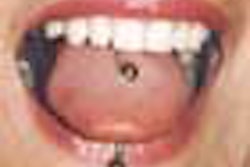While some newer pain-management techniques have been shown to be effective, analgesics remain the primary treatment choice for controlling orthodontic pain, according to a new study in the Angle Orthodontist (September 2010, Vol. 80:5, pp. 925-932).
Researchers from Sichuan University in China did a computerized literature search to compare the effectiveness of various methods of pain control intervention used during fixed orthodontic appliance therapy.
They searched Medline (1966-2009), the Cochrane Library (Issue 4, 2009), Embase (1984-2009), and CNKI (1994-2009) for randomized, controlled trials for pain reduction during orthodontic treatment. Data were independently extracted by two reviewers and a quality assessment carried out. The Cochrane Oral Health Group's statistical guidelines were followed.
The researchers identified 26 RCTs; six trials (388 subjects) were also included. Meta-analysis found that ibuprofen had a pain control effect at six hours and 24 hours after arch wire placement compared with the placebo group, with a standard mean difference of -0.47 and -0.48, respectively.
They found no difference in pain control between ibuprofen, acetaminophen, and aspirin. Other analgesics such as tenoxicam and valdecoxib had relatively lower visual analog scale (VAS) scores in pain perception. Low-level laser therapy (LLLT) was also found to an effective approach for pain relief, with VAS scores of 3.30 in the LLLT group and 7.25 in the control group.
"Analgesics are still the main treatment modality to reduce orthodontic pain, despite their side effects," the researchers wrote. "Some long-acting nonsteroidal anti-inflammatory drugs and cyclo-oxygenase enzyme inhibitors are recommended for their comparatively lesser side effects. Their pre-emptive use is promising."
Copyright © 2010 DrBicuspid.com



















